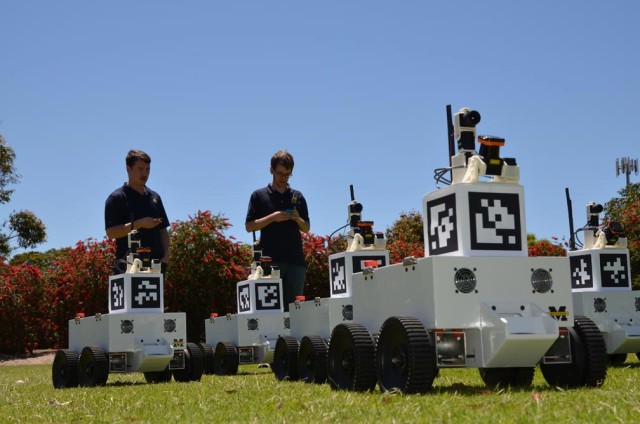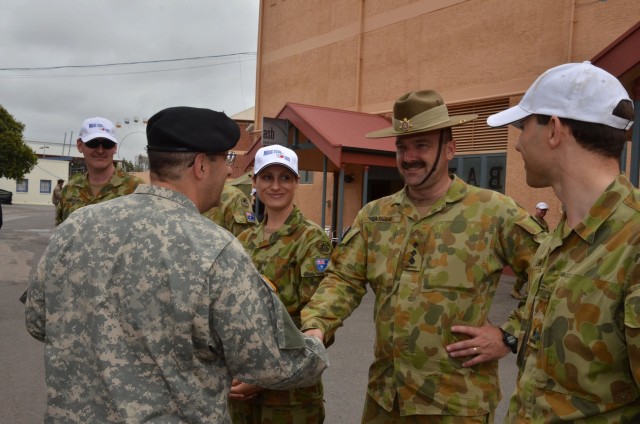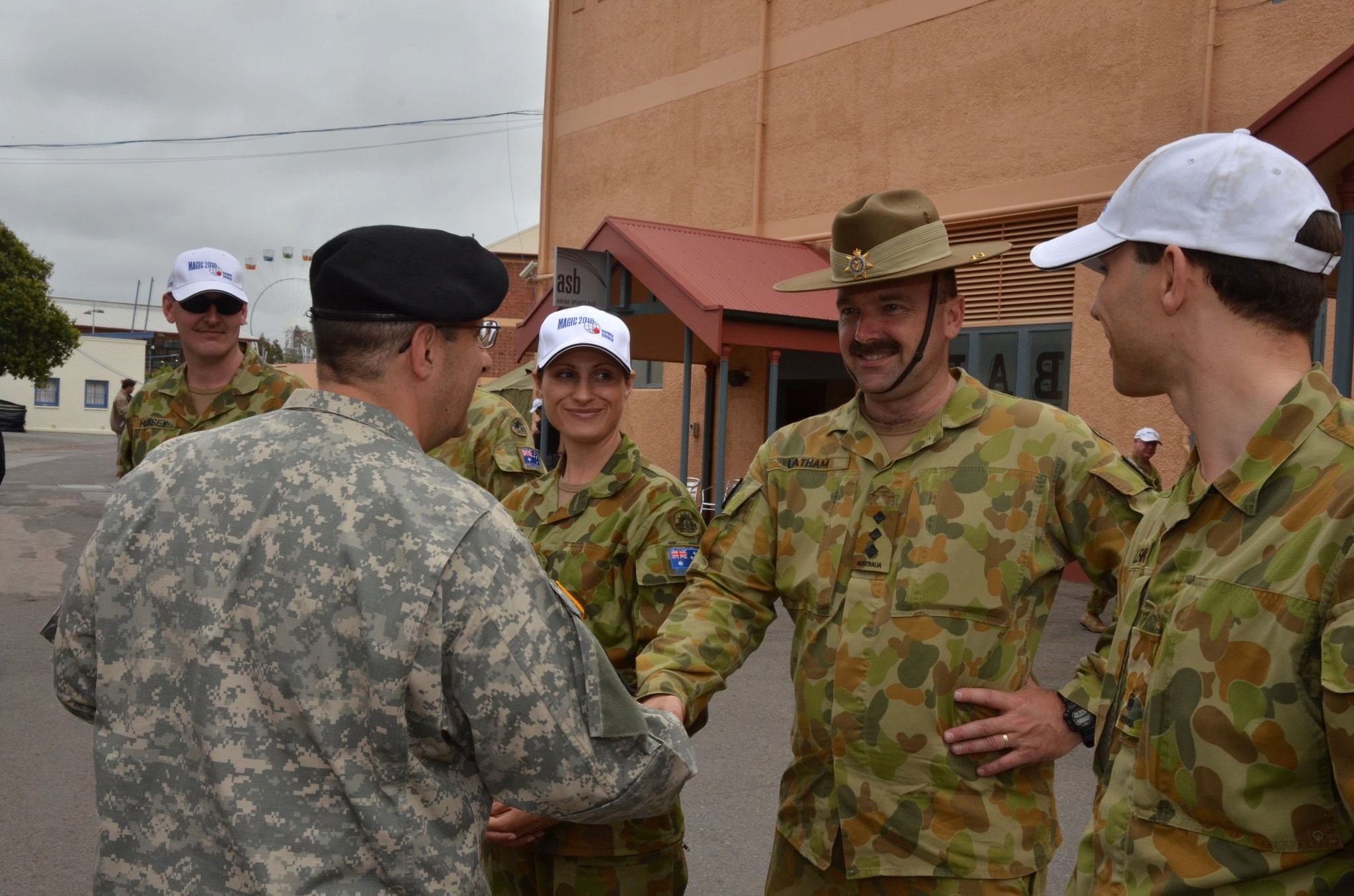BRISBANE, Queensland, Australia (Nov. 17, 2010) -- With a squad of 14 robots that worked together autonomously in a complicated mapping exercise, the University of Michigan's team won the inaugural Multi Autonomous Ground-robotic International Challenge in Australia.
MAGIC 2010 was a joint initiative of Australia's Defence Science and Technology Organisation and the U.S. Army Research, Development and Engineering Command's Tank Automotive Research Development and Engineering Center, known as TARDEC. The competition spanned more than two years with a stated goal of furthering the development of robot teams that could operate autonomously in dangerous situations, keeping Soldiers out of harm's way.
With the win, Team Michigan and partner SoarTech earned a grant of $750,000. Earning second place and a $250,000 grant was the team from the University of Pennsylvania. Team Reconnaissance and Autonomy for Small Robots - RASR - from Gaithersburg, Md., earned $100,000 for third place.
TARDEC Director Grace Bochenek made the announcement during the biannual Land Warfare Conference in Brisbane earlier this week.
"Behind Team Michigan's robots was an amazing group of students who spent countless hours building, programming and testing the entire team of robots - and they also dealt with the formidable logistical challenges of putting everything together and shipping it 10,000 miles away," explained Assistant Professor Edwin Olson, team lead from the Electrical Engineering and Computer Science Department at the University of Michigan. "MAGIC 2010 gave us a chance to show that our research translates to the real world."
Rounding out the top five teams that competed in the Grand Challenge last week at the Royal Showgrounds in Adelaide, South Australia, were teams Cappadocia from Ankara, Turkey, and MAGICian from Perth, Australia.
MAGIC 2010 featured some of the world's most ground-breaking robotics technologies as the teams deployed a total of 43 robots to navigate a 250,000 square-meter indoor and outdoor course over three-and-a-half hours. Teams were judged on a number of factors including the maps they produced and the time they took to complete three increasingly complex challenge phases. Teams were penalized for the amount of time they manipulated their robots manually.
"The inaugural MAGIC 2010 competition brought together top robotics researchers from around the world to push the boundaries of ground robotics," Bochenek explained. "The work accomplished in terms of a team of robots working together will directly benefit our Soldiers now and in the future."
Following the official MAGIC 2010 announcement, 23 teams submitted entries from around the world. The five teams from the United States, Turkey and Australia were selected by the U.S. and Australian defense departments after a two-phase elimination.
"This was an outstanding competition and I have been blown away by the technologies these teams demonstrated," explained TARDEC's Jim Overholt, the Army's senior research scientist for robotics. "I am sure we will look back upon MAGIC 2010 as a watershed moment for our Soldiers."
Headquartered at the Detroit Arsenal in Warren, Mich., TARDEC is the nation's laboratory for advanced military automotive technology.




Social Sharing